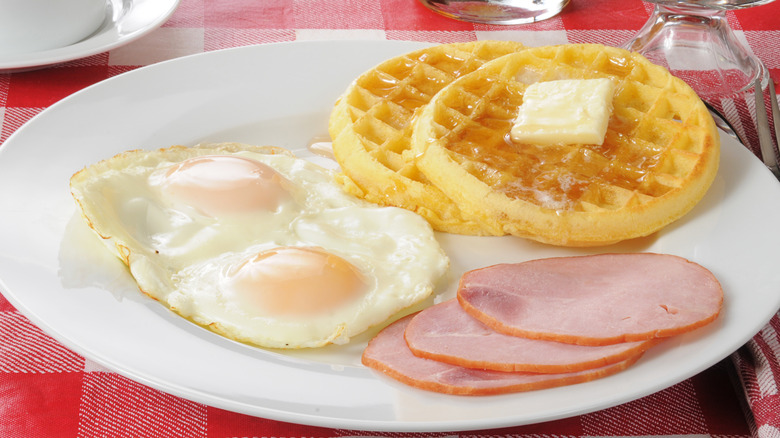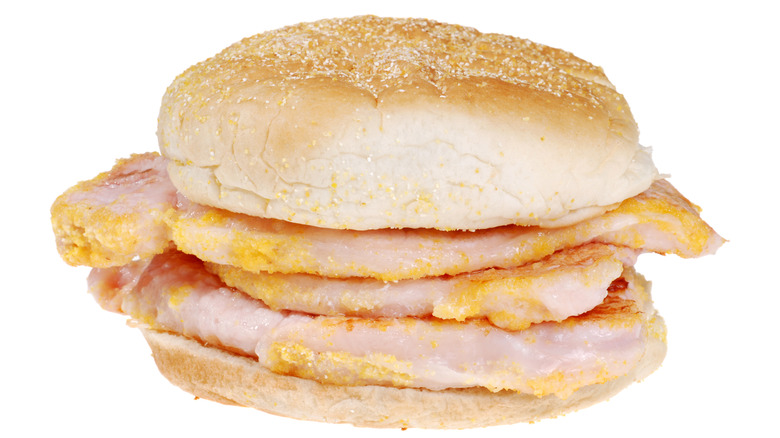Canadian Bacon Isn't Really Canadian At All
The culinary world is filled with food misnomers. Danishes originated in Austria. French toast was born before France. And the London Broil is an American method of preparing beef that has no roots in the United Kingdom at all. Yet the one that causes the greatest confusion between Americans and their neighbors to the north is Canadian bacon.
One of the most disconcerting things for Canadians visiting the United States is what they find on their breakfast plates —particularly, if they've ordered this menu item in the hopes of having a taste of home. Canadians don't typically use the term, but if they did, it would likely refer to the peameal or cornmeal-rolled variety. Unfortunately, what they receive in American restaurants isn't very bacon-like at all. In fact, it looks suspiciously like ham.
So, how did all this confusion come about and what should a Canuck seeking solace through a breakfast meat actually order when heading south of the border?
Authentic Canadian bacon would be the peameal variety
Strangely, the term "Canadian bacon" only exists in American cuisine (and theaters in the mid-'90s). No one else has ever heard of it. In most Canadian fridges, you would find regular American "streaky" bacon — the kind that makes a distinct sizzling sound in the frying pan and is the most important ingredient in a BLT. The runner-up would be peameal bacon, which is actually a pork loin that has been cured in a salty brine and rolled in crushed yellow peas or cornmeal.
The style of bacon that Americans refer to as "Canadian bacon" would actually be a very hard find in the Great White North. A bacon bit in a haystack, if you will. So how did this incorrect moniker come about? Apparently, the British experienced a pork shortage in the mid-1850s and began importing the back meat from Canada. The meat, itself, was Canadian, but the Brits prepared it in a manner that is quite different from their colony. They smoked it, while the Canucks made it into peameal bacon. When the Americans brought the British version home, they named the meat after its country of origin — not the finished product.
Now that the mystery of this erroneous moniker has been solved, Canadians can avoid the most disappointing breakfast ever. When in America, stick to regular bacon — unless you crave something that isn't like bacon at all.

